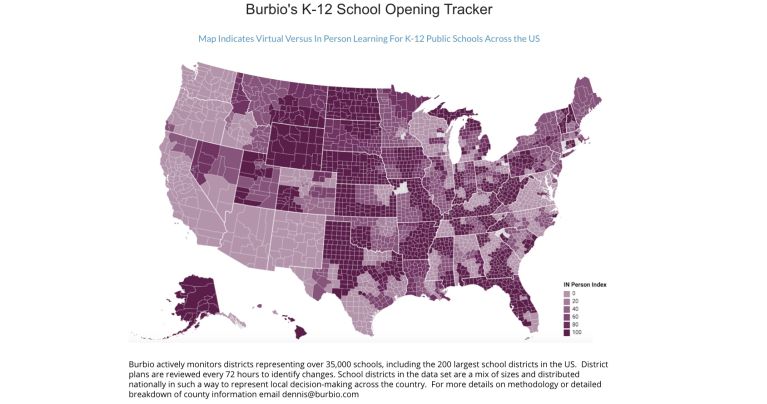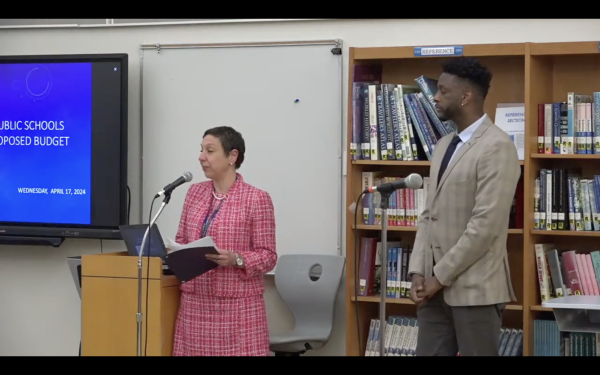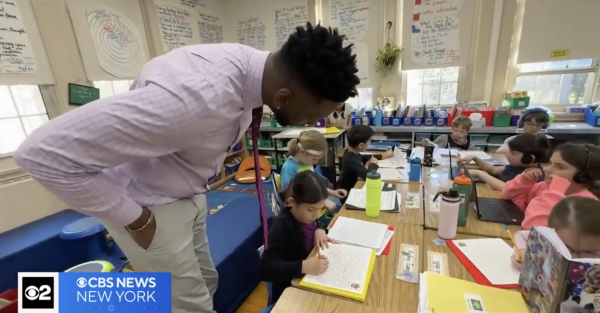More than half of K-12 students in U.S. will start year online, says Burbio.com survey
More than 50% of students in Kindergarten through 12th grade will start the school year online, according to a survey by Burbio.com, the Pelham-based data service that aggregates school and community calendars nationwide.
“Specifically, 52% of students are projected to be learning online to start the year, 44% will be attending in-person either every day or certain days of the week and 4% of students are in school districts that haven’t finalized plans,” Burbio said in a press release Tuesday.
“We have seen a dramatic shift to online-only learning in the past three weeks,” Burbio co-founder Julie Roche said in the release. “Large districts such as Chicago and Sun Belt cities such as Houston and Miami along with large suburban districts such as Fairfax County, Virginia, were all setting plans to return with in-person learning and shifted to fully remote.”
Pelham’s Steve Liesman reported on the Burbio news on CNBC this morning.
District size is a big factor in the approach being taken, with 66% of the 200 largest districts going virtual. Burbio said the survey assumes New York City, the largest district in the country, will hold in-person classes.
Of the 44% in-person districts, about 19% of students will be attending a hybrid format where students only attend certain days, Burbio said, while 25% will go to school daily.
“We expect this situation to stay fluid for the entire academic year and we will continue to measure it,” said Roche. “Many districts have thresholds for Covid-19 levels that could result in converting back to remote learning. Other districts are planning to revisit the ‘on-line’ decision as soon as September and could convert to in-person models.”
Burbio surveys 80,000 K-12 school calendars across all 50 states. For this study, Burbio is monitoring districts representing more 35,000 schools, and district plans are reviewed every 72 hours to identify changes.
(Margin for error is 2.73% at 95% confidence level.)















